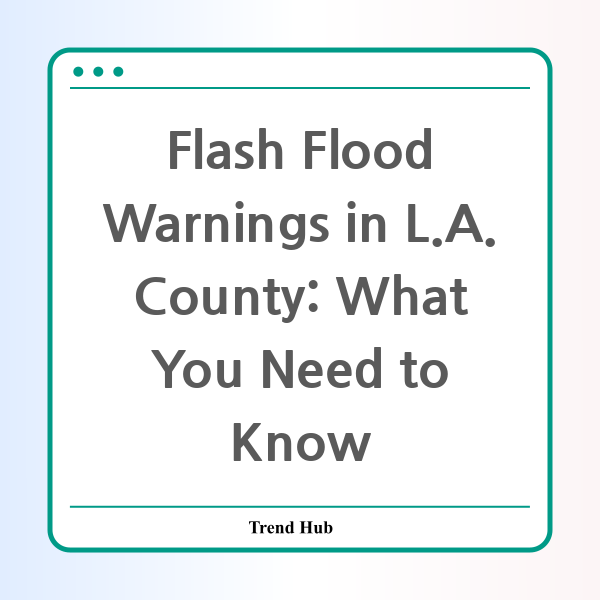* This website participates in the Amazon Affiliate Program and earns from qualifying purchases.

As a significant storm system, described as an "atmospheric river," descends upon Los Angeles County, residents are facing severe weather conditions resulting in flash flood warnings and the potential for destructive debris flows. This could impact thousands of lives and homes, especially given the aftermath of recent wildfires that have left hillsides vulnerable to erosion. Let’s explore what you need to know to stay safe during this unprecedented weather event.
The National Weather Service has issued urgent warnings for flash floods, with rainfall rates projected to reach between 0.75 to 1.25 inches per hour. Such rates can trigger debris flows, especially in areas with burn scars from recent fires, which pose a heightened risk for mudslides and flooding. With wind gusts potentially reaching 70 mph and the threat of weak tornadoes, the dangers are multiplied.
What Are Flash Floods?
Flash floods occur suddenly and can be life-threatening. They develop quickly, usually within six hours of significant rainfall, especially in urban areas where water cannot be absorbed, causing it to pool rapidly. During this event, residents in areas prone to flooding should remain vigilant and prepared for sudden evacuation.
Areas Under Threat
Many communities across Los Angeles County are under dire threat from this weather system. Notable areas affected include:
- Malibu
- San Fernando Valley
- San Gabriel Valley
- Downtown Los Angeles
- Altadena
- East and Southeast L.A. County
- Westside and San Gabriel Mountains
Due to the recent fires, homeowners and residents in these locations are at increased risk for flooding and landslides. Evacuations are mandatory in certain areas, including Pacific Palisades and portions of the burn scars from the Eaton and Palisades fires. The urgency of evacuations is emphasized as first responders go door-to-door to ensure community safety.
Precautions and Preparations
Residents are encouraged to take immediate action to safeguard themselves and their families:
- Evacuation Plans: Develop and review your evacuation plan. Identify safe routes to higher ground.
- Secure Your Home: Move valuables to higher floors, and secure outdoor items that could become projectiles in strong winds.
- Stock Emergency Supplies: Ensure you have enough food, water, medications, and essential supplies for at least 72 hours.
- Stay Updated: Follow local weather updates and emergency directives through your mobile devices or community alerts.
The Impact of Recent Fires
The aftermath of recent wildfires in the region leaves many areas predisposed to landslides and mudflows. Burn scars lack vegetation, which is crucial for stabilizing the soil. Without this, heavy rainfall will saturate the ground quickly, leading to a high probability of debris flows and potential damage to infrastructure.
Residents are urged to heed warnings, especially in regions that have experienced wildfire damage. The weather service warns that even modest rainfall rates can lead to severe conditions in these vulnerable areas.
Final Thoughts
The impending storm in Los Angeles County serves as a stark reminder of nature’s unpredictability. While rain is often welcomed, the conditions created by wildfires make this situation particularly perilous. Staying informed, prepared, and ready to respond is essential for safety in these tumultuous times.
As the storm approaches, we urge everyone in the affected regions to prioritize safety and adhere to all evacuation orders. Protect yourself, your loved ones, and your community by taking these warnings seriously.
* This website participates in the Amazon Affiliate Program and earns from qualifying purchases.